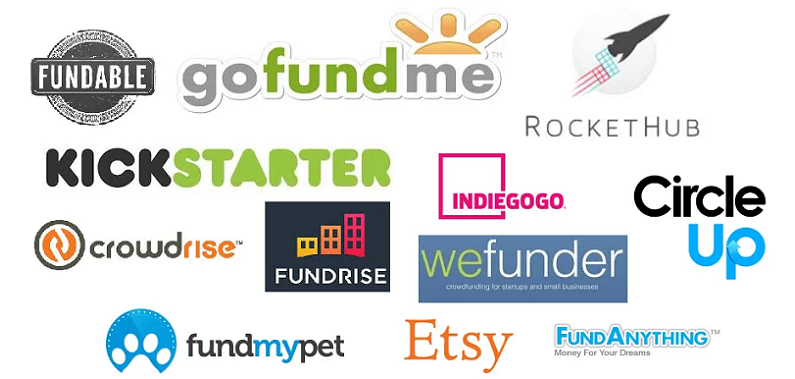
In the dynamic landscape of nonprofit fundraising, embracing digital strategies has become a necessity rather than an option. Among the various digital approaches available, crowdfunding stands as one of the most influential, opening avenues to not only generate funds but also foster a sense of community and shared purpose. Here we equip you with the essential knowledge, tools, and best practices to launch and manage an effective crowdfunding campaign for your nonprofit.
Contents
- Understanding Crowdfunding
- Benefits of Crowdfunding for Nonprofits
- Preparing for a Nonprofit Crowdfunding Campaign
- Selecting the Right Crowdfunding Platform for Your Nonprofit
- Creating a Compelling Campaign for Your Nonprofit
- Promoting the Crowdfunding Campaign for Your Nonprofit
- References
Understanding Crowdfunding
Before we get into the intricacies of running a successful crowdfunding campaign for your nonprofit, it’s essential to have a clear understanding of what crowdfunding is and how it operates. This knowledge will equip you with a strong foundation to tailor your strategies effectively and capitalize on the opportunities this fundraising model presents.
What is Crowdfunding?
Crowdfunding is a method of raising capital through the collective effort of friends, family, customers, and individual investors. This approach taps into the collective efforts of a large pool of individuals—primarily online via social media and crowdfunding platforms—and leverages their networks for greater reach and exposure.
In the nonprofit context, crowdfunding is a strategy to source small donations from a broad audience, often for a specific project or cause. Instead of relying on substantial contributions from a few donors, crowdfunding leverages the cumulative support of many.
Types of Crowdfunding
Crowdfunding comes in several flavors, each with its own unique set of characteristics and benefits [1]. Here are the most common types.
Donation-Based Crowdfunding
This is arguably the most common type used by nonprofits. Donors give a small amount to the cause without expecting anything in return, aside from the feeling of having contributed to a worthy cause.
Rewards-Based Crowdfunding
In this model, backers receive a token of appreciation or a “reward” based on their donation amount. Rewards could be anything from merchandise, personalized thank you notes, to experiences like meeting the team behind the cause.
Equity-Based Crowdfunding
This type is generally more relevant to start-ups and for-profit enterprises, where investors receive a small piece of equity in the company in exchange for their investment.
For nonprofits, donation-based and rewards-based crowdfunding are the most applicable and widely-used models.
Importance of Crowdfunding in Nonprofit Sector
In the nonprofit sector, crowdfunding has emerged as a powerful fundraising tool. It democratises philanthropy, allowing individuals from all walks of life to contribute to causes they care about. Moreover, it provides a platform for nonprofits to tell their stories, raise awareness, and connect with a global audience.
In an era where digital connection is increasingly important, crowdfunding empowers nonprofits to reach beyond their local communities and tap into a worldwide network of potential supporters. By harnessing the power of social media and online networking, even smaller nonprofits can gain visibility, attract new donors, and make a significant impact.

Benefits of Crowdfunding for Nonprofits
Now that we’ve established a basic understanding of crowdfunding and its different types, let’s dive into why crowdfunding is an effective fundraising strategy for nonprofit organizations. Beyond the apparent benefit of raising funds, crowdfunding has several other advantages that can contribute to the overall success and sustainability of your nonprofit.
Financial Benefits
The primary goal of crowdfunding is, of course, to raise money for your cause. But the financial benefits of crowdfunding go beyond the immediate influx of funds.
Diversified Funding Source
Crowdfunding adds another revenue stream to your organization’s financial resources, reducing your reliance on traditional funding sources such as grants and major donors. This diversification can enhance financial stability.
Low Barrier to Entry
Setting up a crowdfunding campaign typically requires minimal upfront investment, making it a cost-effective strategy for nonprofits of all sizes.
Potential for Viral Fundraising
If your campaign resonates with people, they can quickly share it within their networks, potentially leading to a ripple effect of donations that far exceed your initial goal.
Marketing and Promotion Benefits
Crowdfunding isn’t just about fundraising; it’s also a powerful marketing tool [2].
Brand Awareness
A compelling crowdfunding campaign can significantly boost your nonprofit’s visibility, raising awareness of your organization and mission among new audiences.
Storytelling
Crowdfunding campaigns provide an excellent opportunity to share your organization’s story and the impact of its work. This can create a strong emotional connection with potential donors, which can foster long-term loyalty.
Community Engagement and Participation
Crowdfunding also offers an avenue for deepening community engagement.
Community Building
Crowdfunding fosters a sense of community among your supporters. They are not just making a donation; they are becoming part of your cause, contributing to your mission’s success.
Donor Engagement
Crowdfunding campaigns provide regular updates, keeping donors engaged and making them feel valued and part of the journey. This can lead to increased donor retention.
Case Studies Illustrating Benefits
Let’s look at some real-world examples of nonprofits that have reaped these benefits through successful crowdfunding campaigns.
Charity: Water
Charity: Water, a nonprofit dedicated to providing clean drinking water to people in developing countries, has raised millions through crowdfunding. Their campaigns effectively use storytelling and provide clear, tangible results of what donors’ money can achieve, fostering trust and encouraging repeat donations.
Project HOPE
During the COVID-19 pandemic, Project HOPE used crowdfunding to fund emergency support efforts. Their campaign resonated with people around the world, raising significant funds and increasing awareness of their broader work.

Preparing for a Nonprofit Crowdfunding Campaign
A successful crowdfunding campaign doesn’t happen overnight; it requires careful planning and preparation. From setting clear goals to planning an effective communication strategy, every detail contributes to your campaign’s overall success.
Setting Clear Goals
Before you begin any fundraising campaign, it’s crucial to establish clear, measurable goals [3].
Fundraising Goal
Determine how much money you need to raise to fund your project or initiative. Be realistic about this figure, as setting an unattainable goal can deter potential donors.
Impact Goals
Identify what you aim to achieve with the raised funds. Whether it’s providing meals to a certain number of individuals, funding a specific project, or reaching a particular milestone, having clear impact goals can motivate donors and demonstrate the tangible effect of their contribution.
Identifying Target Audience
Knowing your target audience is crucial in designing a campaign that resonates.
Donor Profiles
Identify the demographic characteristics, interests, and motivations of your potential donors. This information will help tailor your campaign message and communication channels to reach and engage your audience effectively.
Engagement Strategies
Determine the best ways to engage different segments of your audience. For instance, younger donors may respond well to social media outreach, while older donors might prefer email communication.
Crafting a Compelling Story
People respond to stories, not statistics. A compelling story is at the heart of every successful crowdfunding campaign.
Emotional Connection
Develop a narrative that connects on an emotional level. Show the human impact of your work, the challenges you face, and how the funds raised will make a difference.
Visual Storytelling
Consider using videos, photos, and infographics to make your story more engaging and memorable. Visual elements can make a powerful impact and are easily shareable on social media.
Determining the Funding Target
Your funding target should be carefully considered. It should be sufficient to achieve your goals, but also realistic and achievable.
Cost Estimation
Calculate all the costs related to your project or initiative. This includes direct costs and any overheads.
Funding Target Setting
Based on your cost estimation, set a funding target for your campaign. Remember to factor in the fees of the crowdfunding platform and any costs related to rewards or donor recognition.
Planning a Communication Strategy
Effective communication is crucial to crowdfunding success.
Communication Channels
Identify the channels you will use to reach your target audience, such as social media, email newsletters, or local media outlets.
Communication Plan
Develop a plan for when and how you’ll communicate with your supporters throughout the campaign. Regular updates can keep your audience engaged and foster a sense of community around your cause.

Selecting the Right Crowdfunding Platform for Your Nonprofit
Choosing the right platform to host your crowdfunding campaign is a critical step in your preparation process. Each platform comes with its own set of features, benefits, and fee structures.
Overview of Popular Nonprofit Crowdfunding Platforms
Numerous crowdfunding platforms cater specifically to nonprofits, each offering unique features [4]. Here are a few of the most popular:
- GoFundMe: Known for its user-friendly interface, GoFundMe has been utilized by countless nonprofits and individuals for fundraising purposes. Its primary benefit is that it doesn’t charge a platform fee, only payment processing fees.
- Kickstarter: While better known for creative projects, Kickstarter also hosts campaigns for nonprofits, especially those related to art, music, and publishing. Note that Kickstarter operates on an all-or-nothing model – you must reach your funding goal to receive any funds.
- Indiegogo: Indiegogo is flexible, offering both fixed (all-or-nothing) and flexible (receive funds regardless of goal attainment) funding options. It also supports a wide range of categories.
- GlobalGiving: Specifically tailored to nonprofits, GlobalGiving connects nonprofits with donors and companies worldwide. It also provides nonprofits with training and support.
- CauseVox: CauseVox offers comprehensive fundraising solutions, including crowdfunding, peer-to-peer fundraising, and donation pages. It is designed with nonprofits in mind.
Factors to Consider When Selecting a Platform
When deciding which platform to use, consider the following factors:
- Fees: Understand the fee structure, including platform fees and payment processing fees. Some platforms may also charge for additional features.
- Features: Look at the features offered, such as the ability to add videos, social media integration, and data tracking capabilities.
- Support and Resources: Check if the platform provides resources and support for campaigners, such as guides, tutorials, and customer service.
- Reputation and Trustworthiness: Consider the platform’s reputation. Platforms that are well-known and trusted by donors can contribute to your campaign’s credibility.
Pros and Cons of Top Platforms
Each platform comes with its own set of advantages and disadvantages. For instance:
- GoFundMe: It’s free to create a campaign, and there are no platform fees, but it may not offer the same level of customer support or resources as some other platforms.
- Kickstarter: It’s a popular and trusted platform, but the all-or-nothing funding model may be risky for some campaigns.
- GlobalGiving: It offers extensive support and resources for nonprofits, but it has an application process, and not all nonprofits may qualify.
- CauseVox: It offers a range of tools tailored for nonprofits, but there may be costs associated with some features.
Creating a Compelling Campaign for Your Nonprofit
Once you’ve done the groundwork of setting clear goals, understanding your audience, crafting your story, and choosing the right platform, it’s time to create your campaign.
Developing a Strong Campaign Narrative
Your campaign narrative is the heart of your crowdfunding effort. It tells your story, explains your mission, and motivates people to contribute.
- Emotional Appeal: Make sure your story connects with your audience on an emotional level. Show the human impact of your work and why it matters.
- Clear and Concise: Keep your narrative clear and concise. Avoid jargon and ensure your message is easy to understand for individuals unfamiliar with your cause.
- Visual Storytelling: Use photos, videos, infographics, or other visual content to make your campaign more engaging and shareable. A picture is worth a thousand words and can often make a more powerful impact than text alone.
Setting Up Your Campaign Page
The campaign page is where potential donors will learn about your cause, so make it as engaging and informative as possible [5].
- Appealing Title: Your title should be catchy and concise, immediately giving potential donors an idea of what your campaign is about.
- Detailed Description: The description is where you tell your story, explain your cause, and specify how the funds will be used. Make it as compelling as possible to encourage donations.
- Visuals: Include high-quality images, infographics, or a compelling video to draw in visitors and make your campaign more memorable.
- Donation Tiers: Consider offering different donation tiers with corresponding ‘thank you’ gifts or acknowledgments. This can motivate larger donations.
Creating an Outreach Plan
Promoting your campaign is essential to attract donors.
- Social Media Promotion: Use your social media channels to share your campaign and encourage followers to do the same.
- Email Marketing: Send an email blast to your subscriber list announcing the launch of your campaign and provide regular updates.
- Media Outreach: If your campaign has a broad or unique appeal, consider reaching out to local news outlets or bloggers in your niche.
Maintaining Donor Engagement
Keeping donors engaged throughout your campaign can help boost donations and ensure your supporters feel valued.
- Regular Updates: Provide regular updates on your campaign’s progress. This could include milestones reached, donor shout-outs, or new developments in your project.
- Thank You Messages: Send personalized thank you messages to your donors. This shows your appreciation and fosters a stronger connection between the donor and your organization.
Promoting the Crowdfunding Campaign for Your Nonprofit
After meticulously creating your crowdfunding campaign, the next step is to promote it far and wide. How effectively you publicize your campaign will directly impact its success.
Leveraging Social Media
In the digital age, social media is a powerful tool for promoting your crowdfunding campaign.
- Choosing the Right Platforms: Identify the platforms where your target audience spends most of their time. This could include Facebook, Twitter, Instagram, LinkedIn, or others.
- Creating Shareable Content: Craft posts that are engaging and easy to share. This could be compelling snippets from your campaign story, eye-catching images, or videos that succinctly explain your cause.
- Engaging with Your Audience: Engage with your followers by responding to comments, thanking those who share your posts, and encouraging conversations around your cause.
Email Marketing
Email is a direct and personal way to communicate with your supporters.
- Campaign Launch Announcement: Send an email to your subscribers announcing the launch of your crowdfunding campaign. Explain why their support is critical and how they can help.
- Regular Updates: Provide your subscribers with regular updates on the campaign’s progress, thanking them for their support and encouraging them to share the campaign with their networks.
- Segmentation: If possible, segment your email list and tailor your messages to different groups. For instance, previous donors might receive a different message than new subscribers.
Utilizing Your Website
Your organization’s website is an ideal place to showcase your campaign.
- Homepage Highlight: Feature your crowdfunding campaign prominently on your homepage, making it easy for site visitors to learn more and donate.
- Blog Posts: Write blog posts about your campaign, going into more detail about your cause, the impact of donations, and updates on the campaign’s progress.
In-Person and Traditional Media Outreach
While digital channels are crucial, don’t neglect traditional media and in-person outreach.
- Local Media: Send press releases to local newspapers, radio stations, and TV stations. If your campaign has a local angle or a compelling story, they might feature it.
- Events: If your organization holds events, use them as an opportunity to promote your campaign. This could be through speeches, flyers, or a donation booth.
Engaging Influencers and Ambassadors
Influencers and ambassadors can help extend your reach.
- Influencer Outreach: Reach out to influencers who align with your cause and ask them to share your campaign with their followers.
- Ambassador Program: Encourage your most dedicated supporters to become ambassadors for your campaign, sharing it within their personal and professional networks.
References
[1] Crowdfunding for Nonprofits | Top 8 Crowdfunding Platforms and Tips
[2] The 11 Best Crowdfunding Sites To Consider for Your Nonprofit
[3] What Is Crowdfunding for Nonprofits?
[4] Nonprofit Ultimate Guide | What to Know About Crowdfunding
[5] 12 Best Crowdfunding Sites for Smart Fundraising
